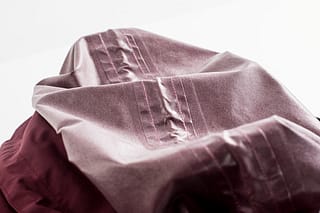How to repair waterproof garments at home
Repairing waterproof garments at home can be quite daunting at first sight. This is why we put together an easy to follow guide that will help you to tackle this repair with confidence or to know when it is time to hand your favourite outerwear garment to a professional.

Making a garment waterproof is an art of its own. We are using a fabric with a membrane glued to the inside which lets your sweat wick out, but prevents rain or snow from coming inside. Additionally, the outside of the fabric is treated with a DWR which strengthens the waterproofing of the garment.
And this is where it gets tricky. If you put a needle through a waterproof fabric, the waterproofing will be damaged in that spot, which is why we need to be a lot more careful when repairing waterproof items than for example your favourite old hoodie.
So how do we approach repairing a seam, tear or hole in a waterproof garment? We are here to demystify the myth.
Option 1: Repairing with glue on patches

We recommend using a glued patch to mend holes in waterproof items since stitching would compromise the waterproofness.
Repairing with glue on patches requires zero repair experience and we want to encourage everyone to give it a go, before throwing out your favourite snow jacket or pants.
Noso patches is a brand that makes high quality patches that are waterproof and last in the washing machine. They are incredibly easy to use and good to carry in your bag to fix a hole on the go.
Option 2: Repairing with needle and thread

There are some situations when a patch wouldn’t do the work, for example over a bulky seam junction or when the tear is too big to be covered by a patch. In these cases, using needle and thread is most of the time the only option.
When developing a waterproof garment, we think about which zones are most exposed to water. This is where the waterproofing performance is most important.
If you stitch through the fabric on your jacket’s hood edge, this is probably not going to bother you since the whole hood opening is a big hole exposing you to water. Use the same philosophy when repairing:
Repair with a needle where water doesn't reach or where the needle won't penetrate all the way through the main shell fabric.
Repair zones for waterproof gear
We put together a visual aid for you, that will make it easy to decide whether to go forward with a repair or to look for a professional repair service close to you.
Red areas = The red areas are safe to repair by yourself without having to worry about a decrease in waterproofing performance.
Black areas = The black areas should either be repaired with the help of a waterproof patch or handed to a professional repair service with a speciality for the repair of waterproof garments.

List of areas that are safe to repair
- Pocket bags and linings
- Cuffs on jackets
- About 5cm from bottom of jacket
- About 5cm from hood edge
- Upper parts of a bib pant (as it's usually under the jacket)
- Layers on top of the main fabric, such as flaps, plackets, pockets
- Area far up on inside leg and crotch
- Area around armpits
If you are having any doubts, we encourage you to reach out to our very knowledgable customer experience team!
